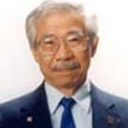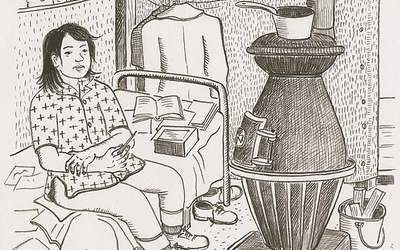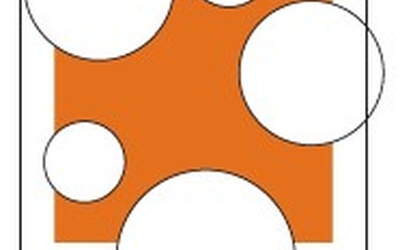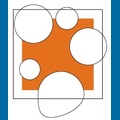
ジェームス・A・ヒラバヤシ
(James A. Hirabayashi)
ジェームズ・アイキラ・ヒラバヤシ(1926-2012)は、サンフランシスコ州立大学で30年間、学部長や民族学部長を歴任するなど、学術界で輝かしい経歴を積みました。民族学部長として、国内初の民族学部(現在のカレッジ)設立における先駆的なリーダーシップが認められました。また、日本の東京大学やアフリカのナイジェリアにあるザリア大学で研究職や教育職を務めました。ヒラバヤシ博士は、そのキャリアを通じて、コレクション、展示会、公共教育プログラム、映画、研究など、全米日系人博物館の教育およびキュレータープログラムに指導と指揮を執りました。
2018年8月更新
この執筆者によるストーリー
有刺鉄線の向こう側 – パート 2
2018年9月6日 • レーン・リョウ・ヒラバヤシ , ジェームス・A・ヒラバヤシ
パート 1 を読む >>戦争の勃発別れを告げる眠っている子供たちの顔に私は捕虜になった冷たい夜の雨の中— 尾崎 正之1 1941年、ハワイには15万8千人の日系人が住んでいた。これは全人口の37パーセントにあたる。カリフォルニア州には9万4千人が住んでいたが、全人口のわずか1パーセントに過ぎなかった。2ワシントン州とオレゴン州には2万5千人がおり、1940年の国勢調査では合計28万5115人であった。3 1941年12月8日、真珠湾攻撃の翌日、736人の日系一世…
有刺鉄線の向こう側 – パート 1
2018年9月5日 • レーン・リョウ・ヒラバヤシ , ジェームス・A・ヒラバヤシ
編集者注:日系アメリカ人の歴史を説明するのに使われる言葉や言い回しは、学者、政府関係者、さらには大統領令9066号の直接の影響を受ける人々の間でさえもかなり異なっている。「移住」、「避難」、「投獄」、「抑留」、「強制収容所」。どれが最も正確で公平であるかについての一般的な合意はない。1994年、全米日系人博物館が「アメリカの強制収容所:日系アメリカ人の経験を振り返る」という展示会を開催したとき、用語の問題をめぐって議論が巻き起こった。展示会がエリス島に移動したとき、アメリカ…
Four Hirabayashi Cousins: A Question of Identity - Part 5 of 5
2008年6月14日 • ジェームス・A・ヒラバヤシ
Part 4 >>Henry (Hank) Nobuo HirabayashiHank Nobuo Hirabayashi was born in Seattle on April 29, 1923. His father, Hamao, appears in many early photographs taken during the first decade of the 1900s with his bachelor cousins and friends. He was one of the earliest to emigrate and urged his cousins to join him. The families were to maintain close relationships throughout the pre-war years. Beginning in a day job in a hotel in Tacoma, Hamao saved his money and eventually …
Four Hirabayashi Cousins: A Question of Identity - Part 4 of 5
2008年6月7日 • ジェームス・A・ヒラバヤシ
Part 3 >>Robert (Bob) Taro MizukamiBob Taro Mizukami was born in 1922 in Star Lake in the hills above Kent, Washington. His mother, Isami, was the youngest sister of Gordon’s father, Shungo, and attended the academy Kensei Gijuku, before emigrating to America. Gordon’s mother, Mitsu, served as an informal “go-between” in his parents’ betrothal. Raised during the Depression, it seemed to Bob that the family was moving almost once a year. The Mizukamis lived and farmed in Thomas right next …
Four Hirabayashi Cousins: A Question of Identity - Part 3 of 5
2008年5月31日 • ジェームス・A・ヒラバヤシ
Part 2 >>Gordon Kiyoshi HirabayashiGordon Kiyoshi Hirabayashi’s father, Shungo, together with Grant’s father, Toshiharu, formed the core of the Thomas Mukyokai fellowship. Gordon was born in 1918 in Seattle, but his earliest memories are of living on the farm in Thomas, Washington, next door to his cousin Grant. The family moved to Seattle one winter to escape from the hard farm life, but returned to try farming again at the urging of the Mukyokai group. Gordon’s mother, Mitsu, was concerned …
Four Hirabayashi Cousins: A Question of Identity - Part 2 of 5
2008年5月24日 • ジェームス・A・ヒラバヤシ
Part 1 >>Grant Jiro HirabayashiGrant Jiro Hirabayashi was born in November 1919. He was named after the Rev. Ulysses Grant Murphy, a Methodist minister and former missionary to Japan who befriended the Mukyokai group. Grant’s father, Toshiharu, was considered the most knowledgeable among the Mukyokai fellowship, since he had attended academy in Hotaka longer than any of the others. Grant’s early religious exposure came from his family setting: “My parents made sure we went to church. I had at least …
Four Hirabayashi Cousins: A Question of Identity - Part 1 of 5
2008年5月17日 • ジェームス・A・ヒラバヤシ
The sudden onset of World War II on December 7, 1941, thrust the issue of identity to the forefront for all Japanese Americans. On February 19, 1942, President Franklin D. Roosevelt signed Executive Order 9066 authorizing the War Department to prescribe military areas from which any or all persons might be excluded. This order served as the basis for Lt. Gen. John L. DeWitt to issue the curfew and exclusion orders. Public Proclamation No. 3 established a curfew from 8:00 …
“Concentration Camp” or “Relocation Center” - What’s in a Name?
2008年4月24日 • ジェームス・A・ヒラバヤシ
It was almost 20 years ago when I read an article by Dexter Waugh in the San Francisco Examiner titled “Semantic debates on war camps” (May 7, 1976). The issue revolved around the use of terminology on a plaque commemorating Tule Lake as a state historic landmark. At the time I exchanged several letters with the chair of the State Historical Resources Commission, a fellow anthropologist, who voted against the use of the term “concentration camp”, saying that he did …





